What goes on at the Functional Fabric Fair
This event for fabric nerds is held in Portland twice a year. Wander the aisles with me.
It took me more than two years of living in Portland to finally get my butt over to the convention center for the Functional Fabric Fair. To be completely honest, I’ve been avoiding trade shows ever since I stopped attending Outdoor Retailer in Denver. They tend to exhaust me and suck away all my productive time. Friends would text me that they were in town for the FFF, and we’d get dinner or coffee, but I never had any interest in attending for myself. What would I even do there?
But then it registered. I am a gear tester, a product and biz writer, and a hobby sewist, and I am extremely fascinated by this world. I would be among fellow fabric nerds! The FFF is a hyper-niche trade show where product designers source fabrics, finishes, trims, and accessories. They meet with fabric mills and suppliers from all over the world to talk shop, build relationships, and make deals.
I went to my second show in April and instead of aimlessly wandering the aisles, I shadowed a few of my designer friends while they shopped. Here’s what I observed and learned about the inner workings of this design fest.

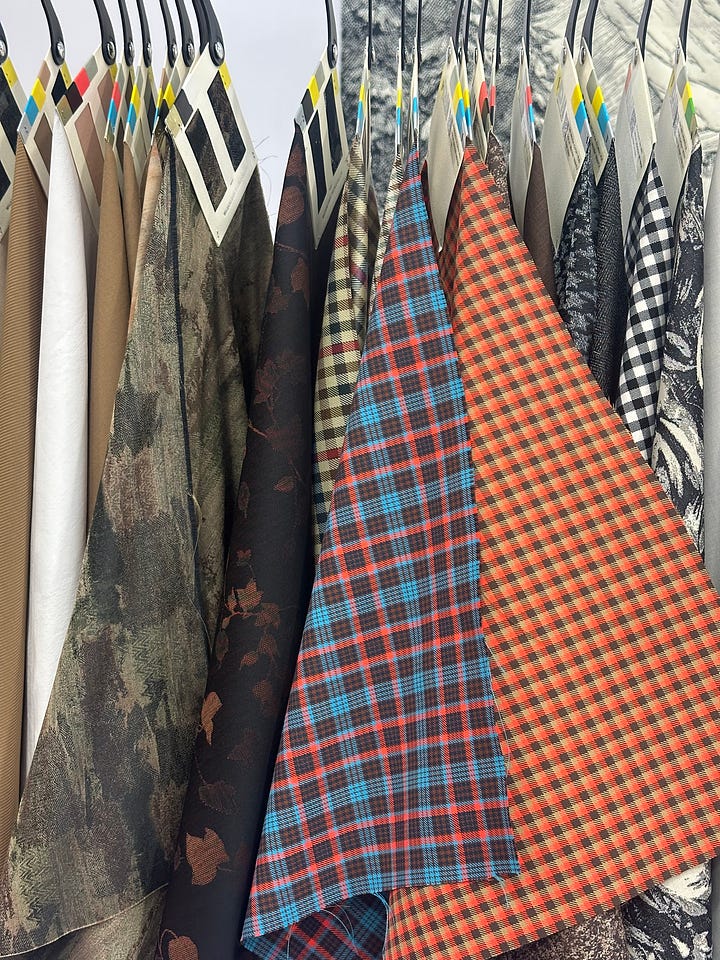
Each booth represents a different kind of company working in garment and soft goods production. Zipper manufacturers. Fiber researchers. Recyclers. Dye houses. Factories that apply coatings. Fabric suppliers and manufacturers, some of which make fabric, some of which sew fabric into things, and some of which do both. A few exhibitors I recognized included YKK, Pertex, Polartec, Pantone, Allied Feather + Down, bluesign, Downlite, Dyneema, Global Merino, Recco. They basically all show up with their representatives, set up booths to display their goods/services, and meet with their customers, both current and prospective.
It was fascinating watching my friends navigate the show. They had prearranged meetings with their contacts, but if they were interested in a particular factory or material or component, they’d simply walk up to a booth rep of, say, an elastics supplier to make an appointment. As they wandered, they told me that they keep specific products in mind and shop for all the different components to build that particular product. It’s like Legoland or Build-A-Bear but way more official.
My friends would also try to find leads for certain components by asking the right questions or sniff out who was doing what. I noticed them taking note of where competitors, allies, and big-name brands like Arc’teryx were congregating.
They knew the who, the what, the where, the why of everything.
“This guy is a fabric savant,” they’d tell me, pointing to some salt-and-pepper fellow wearing flannel behind us. And then they’d go talk to him.


What I found really exciting wasn’t the shopping aspect, although admiring and playing with all the bits and bobs is fun. But I was energized by the thought that this is where new ideas and products are born. A designer might meet with a factory and ask them if they have X, Y, or Z capability. Maybe they do, maybe they don’t. Eventually though, the designer and suppliers and factories and all the other stakeholders put their heads together to collaborate and create, step by step.
I didn’t really understand just how many steps and processes were involved in assembling something like a backpack or a jacket until I started sewing and writing about manufacturing. As the tariff discussions have illuminated, a single garment might cross borders multiple times to undergo different manufacturing steps before it’s considered finished. Most zippers come from Japan, for example.
Surprisingly, nobody was really talking about the T word (tariffs) much. Though one person I met said she saw a booth with a tariff jar—every time someone said the word tariffs, they had to put a dollar in the jar. “What’s the point talking about tariffs if we don’t really know what’s going on?” another person said.
One of my favorite parts of the show is the innovation section, a stretch between the booths with a bunch of light boxes labeled shirts, function meets fashion, tents, wovens, etc. Hanging from the light boxes are strips of fabrics. You can rub the swatches between your fingers, see how they move, feel their texture. And then a sticker with a QR code tells you its fiber content and weight, who makes it, and where you can find it on the trade show floor. Just look at all the options! Lots of designers took their time meandering and inspecting.

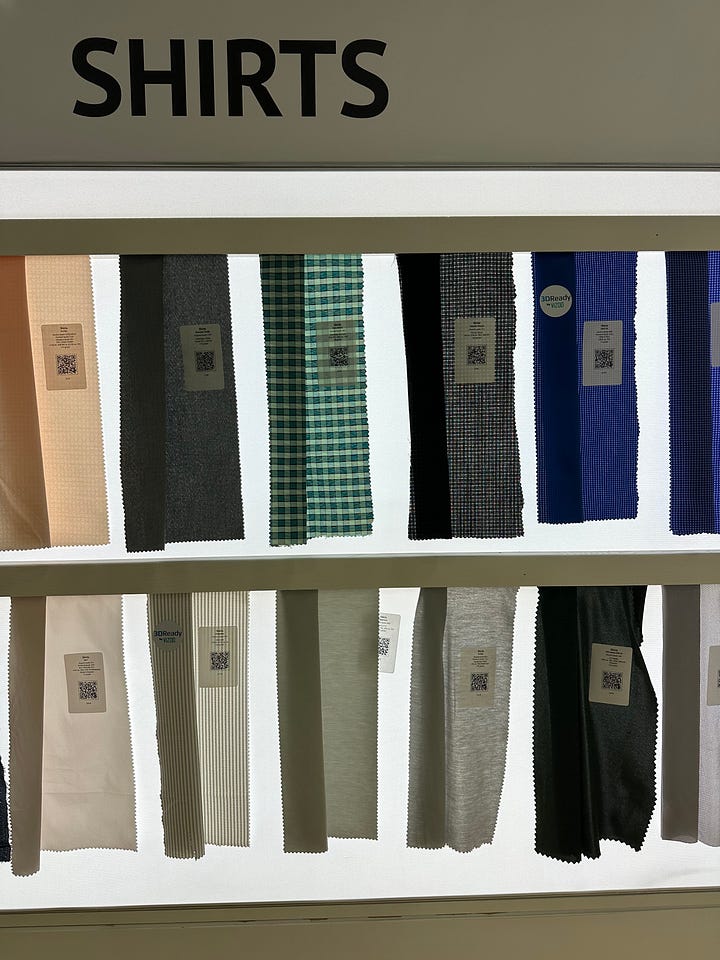
Lastly, I paid a visit to the folks at the
. Housed at Utah State University, the archive charts the visual history of outdoor apparel and equipment through the years. (I’ve written a couple stories about the archive.) The last two shows, and for many more shows before that, they set up an exhibition of vintage gear. This April it was in collaboration with the Japanese retailer Beams and chief buyer Shigeru Kaneko, who shared pieces from his personal collection of down outerwear. Both the retailer and archive launched books this time, too. Last November, the archive’s exhibit was organized around colors (as seen below).I don’t know if any story pitches will come out of this but I think I’ll break my trade show hiatus and make an exception for the FFF whenever it’s in town. I hope you enjoyed getting a little peek into the show. Next time, if I’m feeling brave enough, I want to take photos of people’s outfits for a newsletter. TBD.
Ttyl,
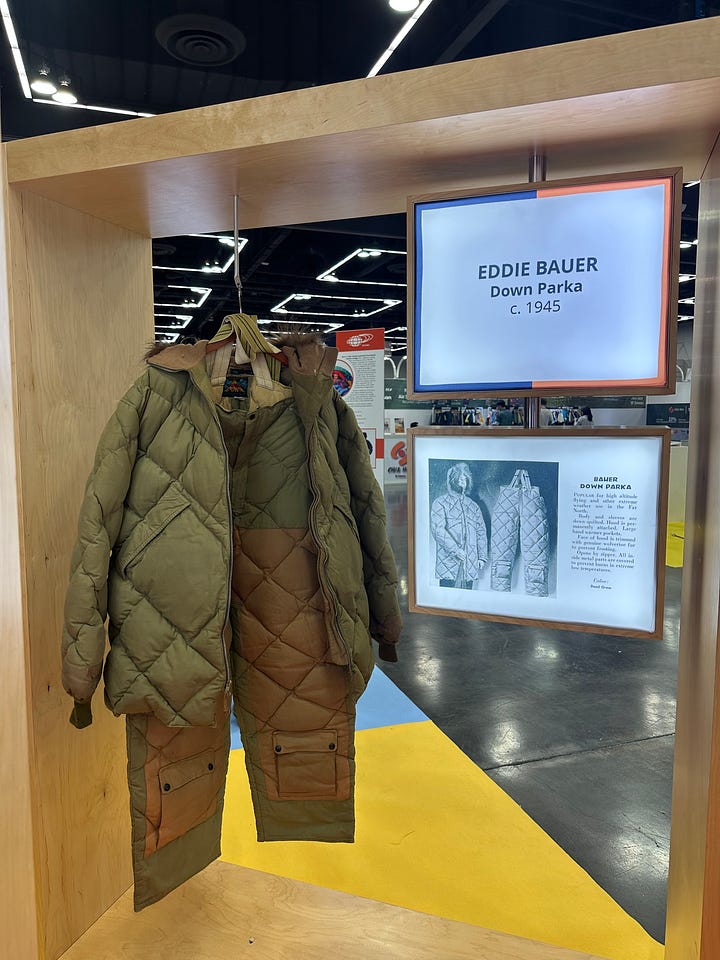
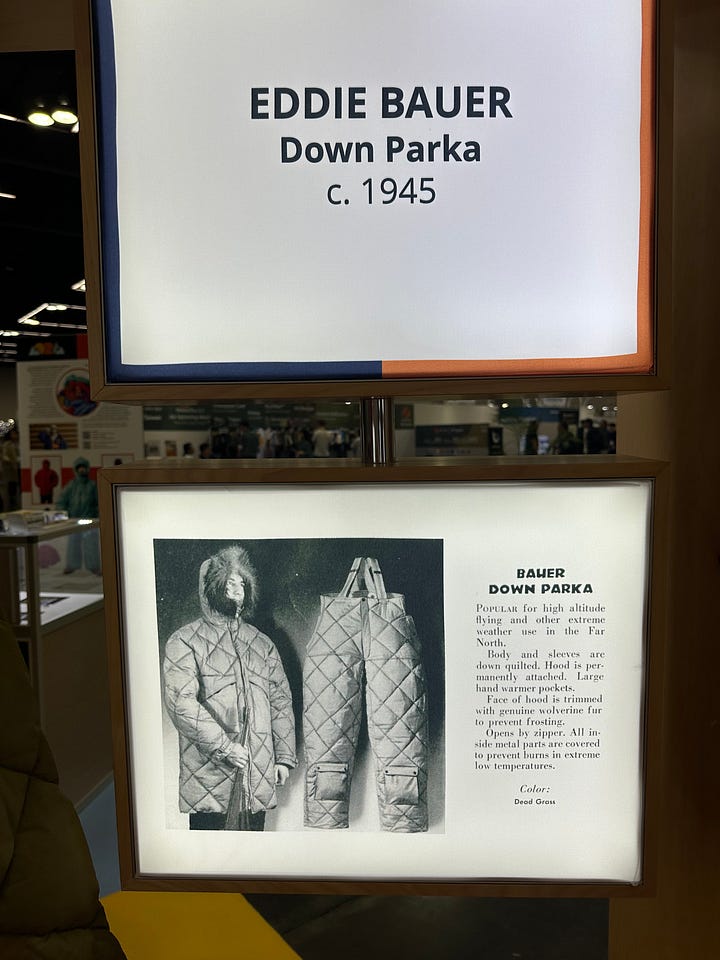
Related reading…
Things I like: My spring outfit rotation
Every year, at the end of winter, I’m totally thrown out of my groove when it comes to getting dressed. Steve will be ready to go on a dog walk, and I’m ripping off my third outfit. It’s just a freak…
Things I like: Sewing aspirations edition
Because this post is extra lengthy today, it’s going to appear clipped in your email inbox. For the best reading experience, open it in the Substack app.

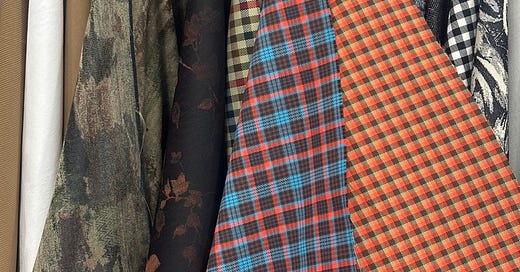



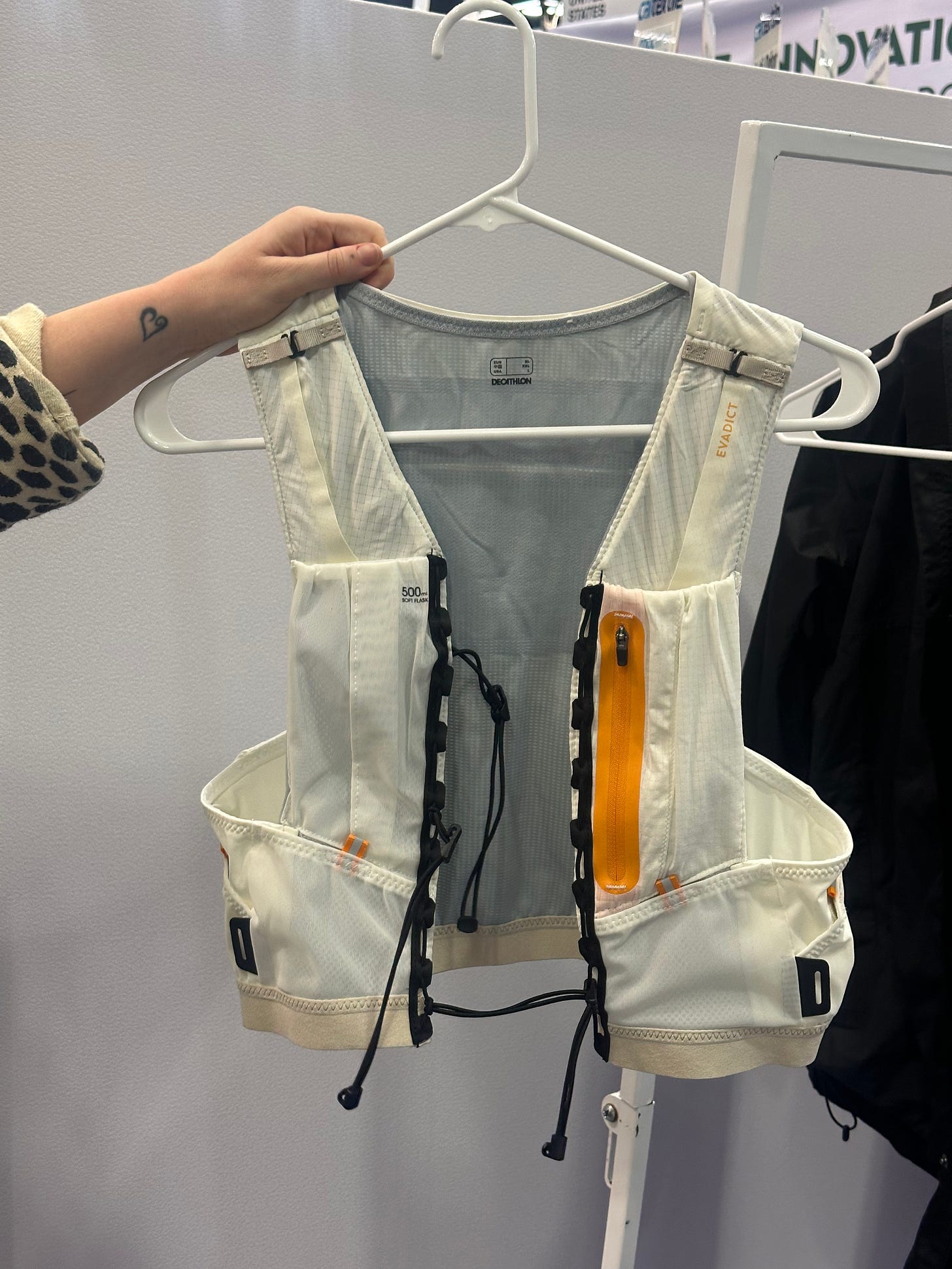
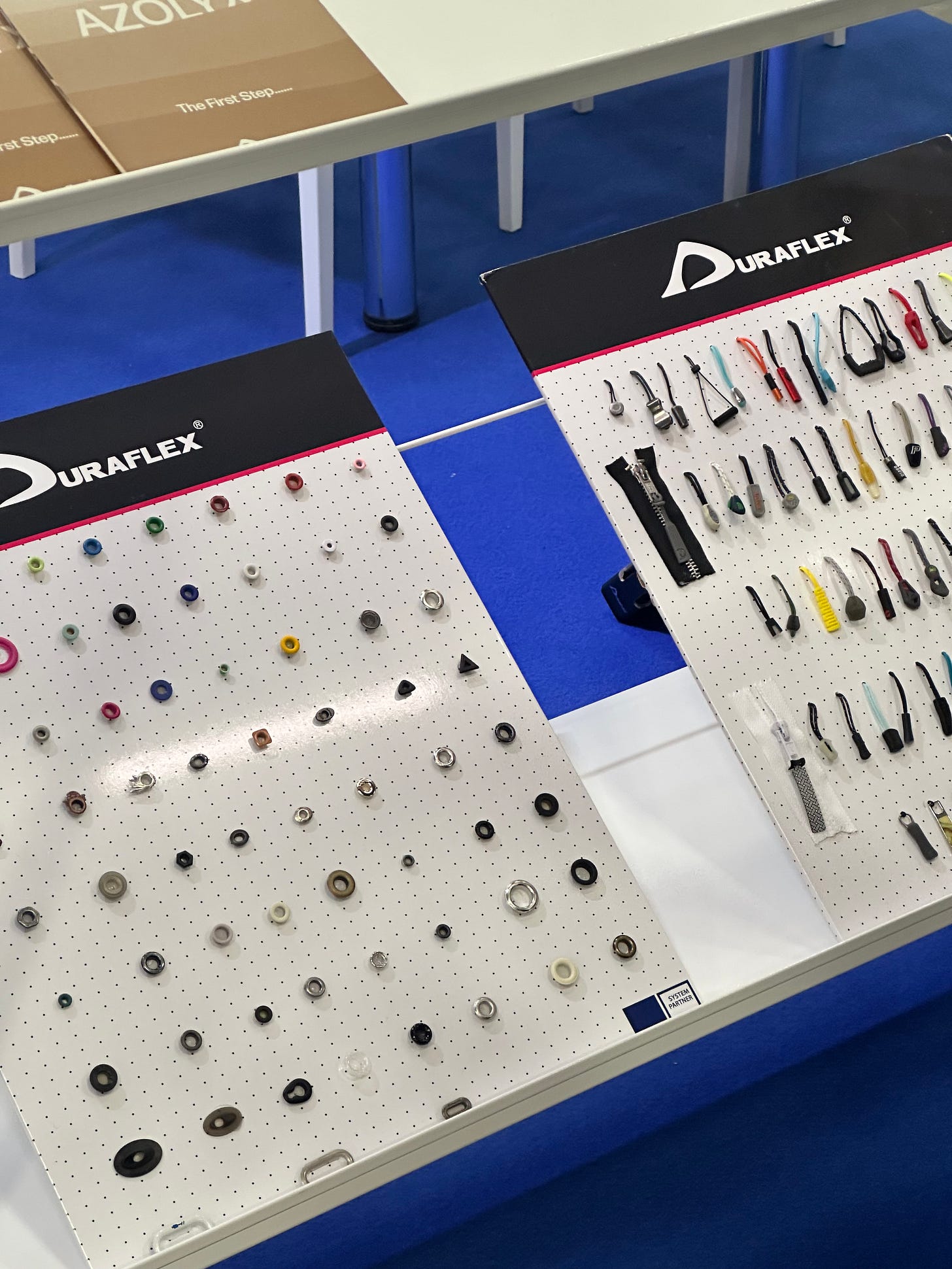




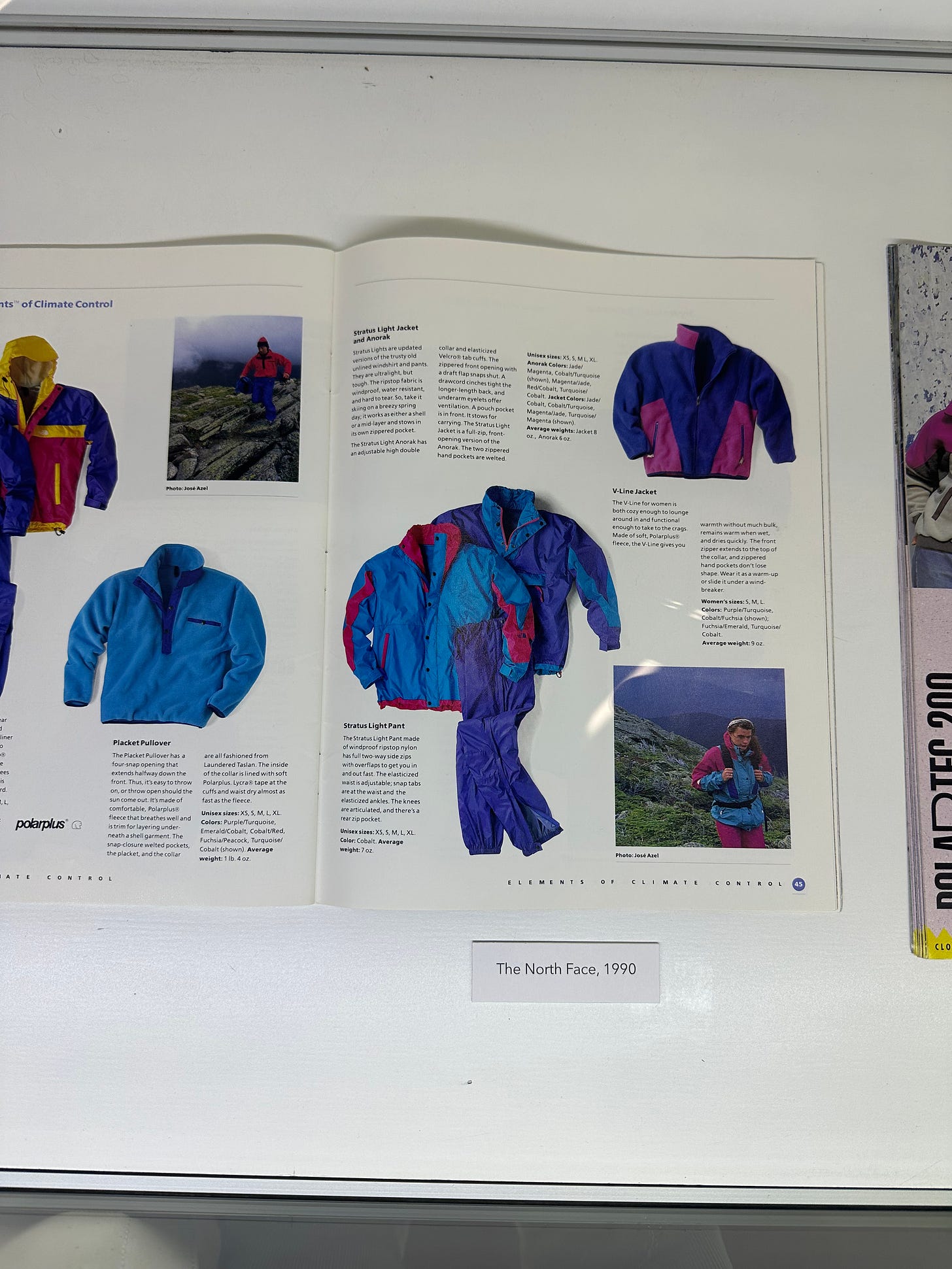





Thank you Amelia!
Loved this post and seeing you!!!